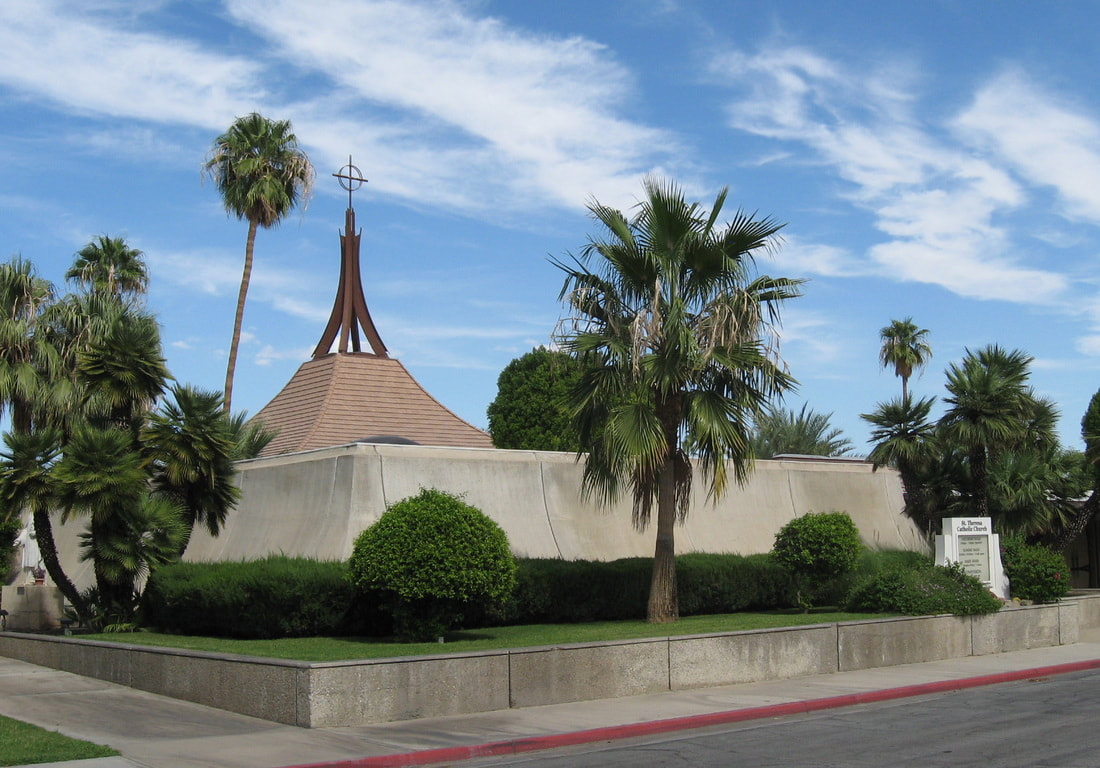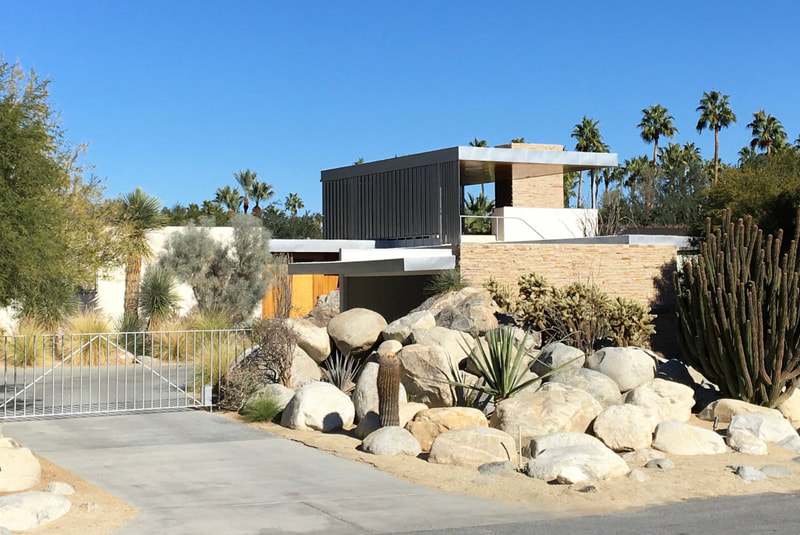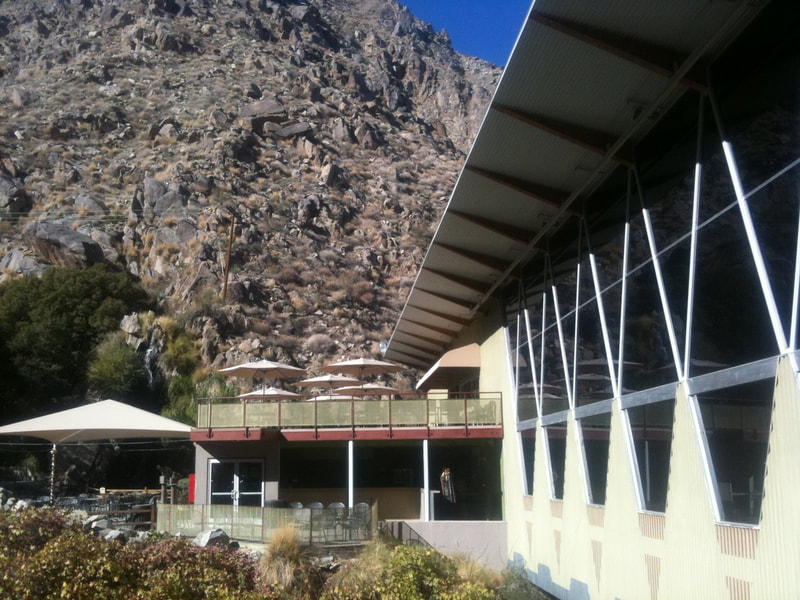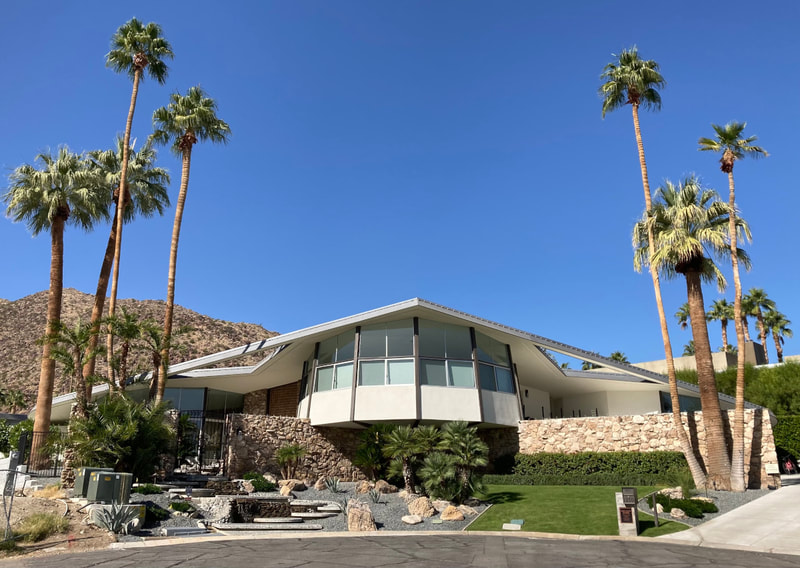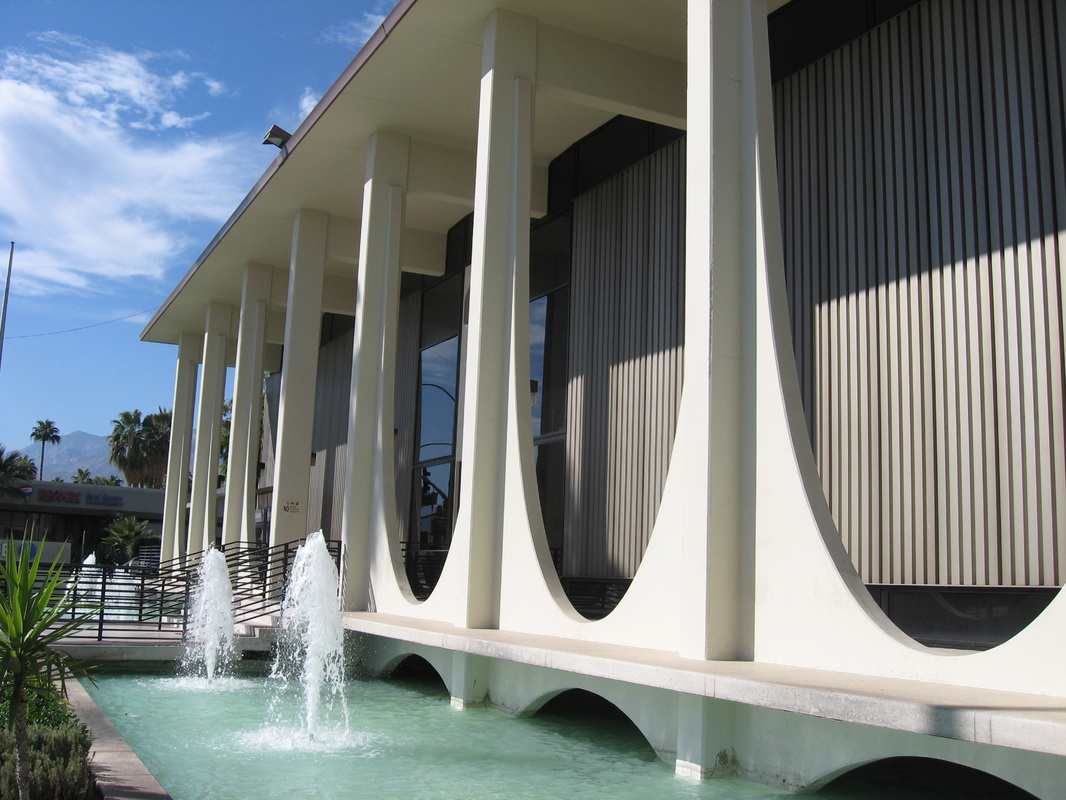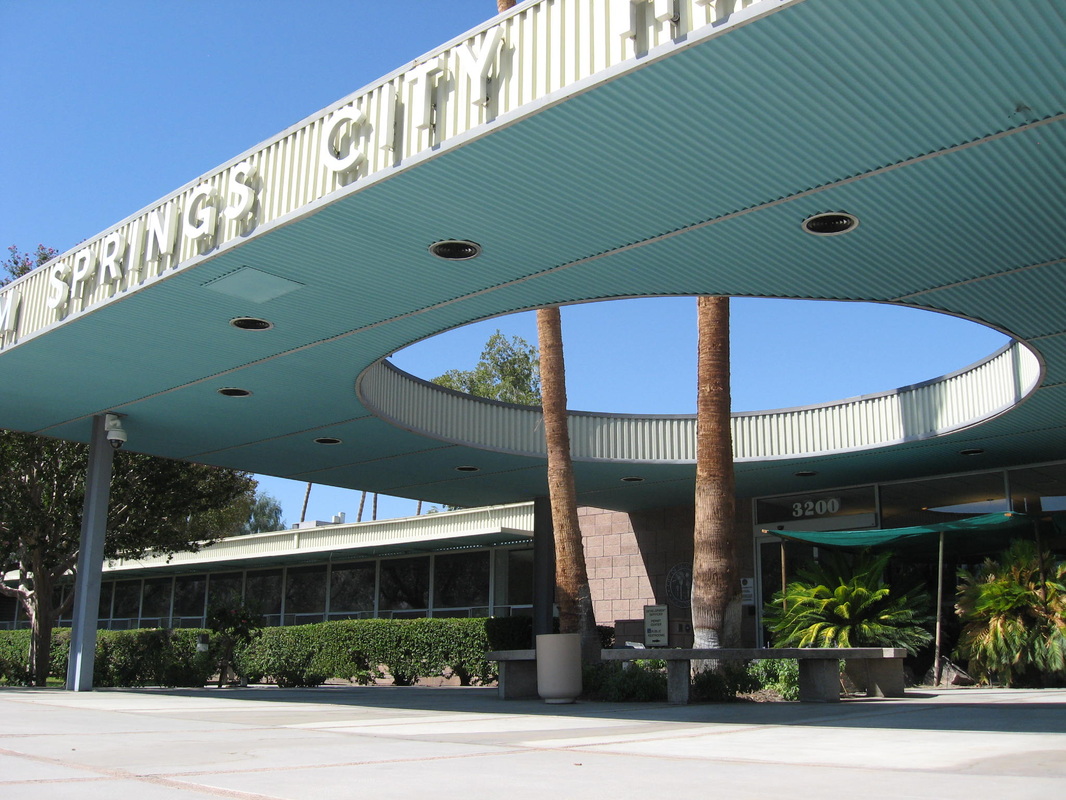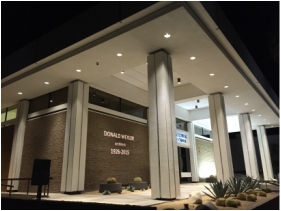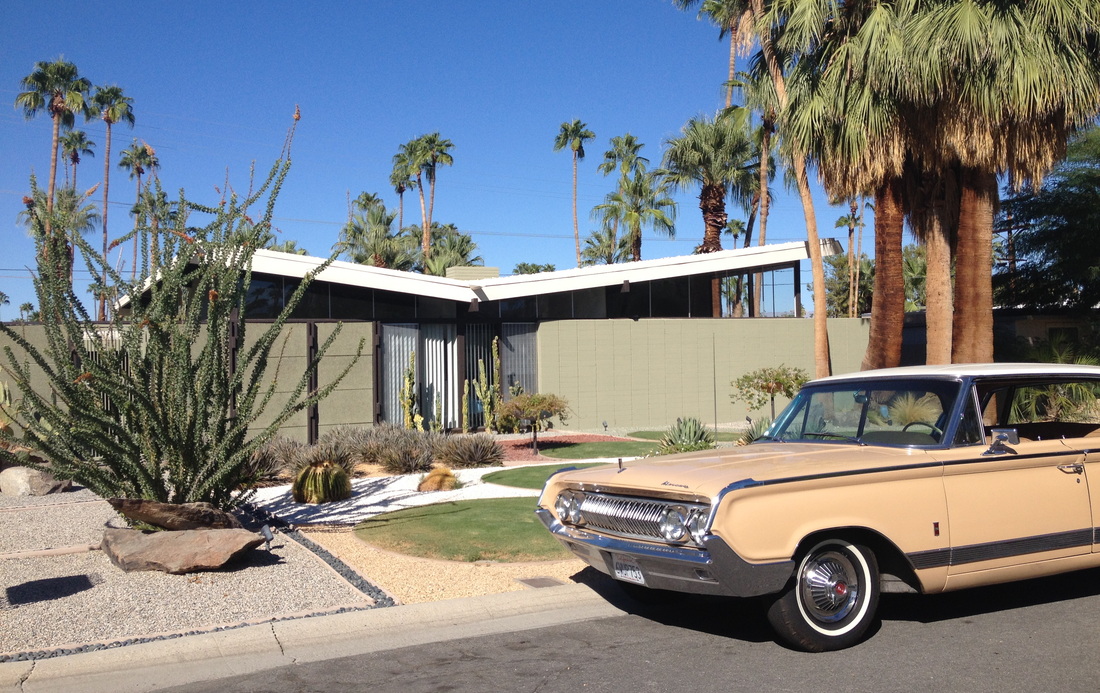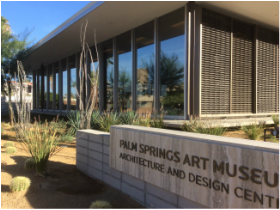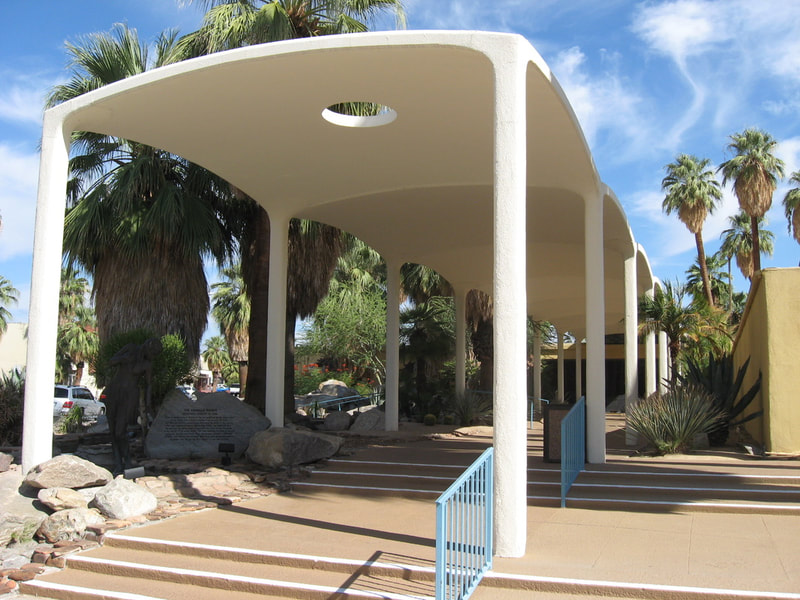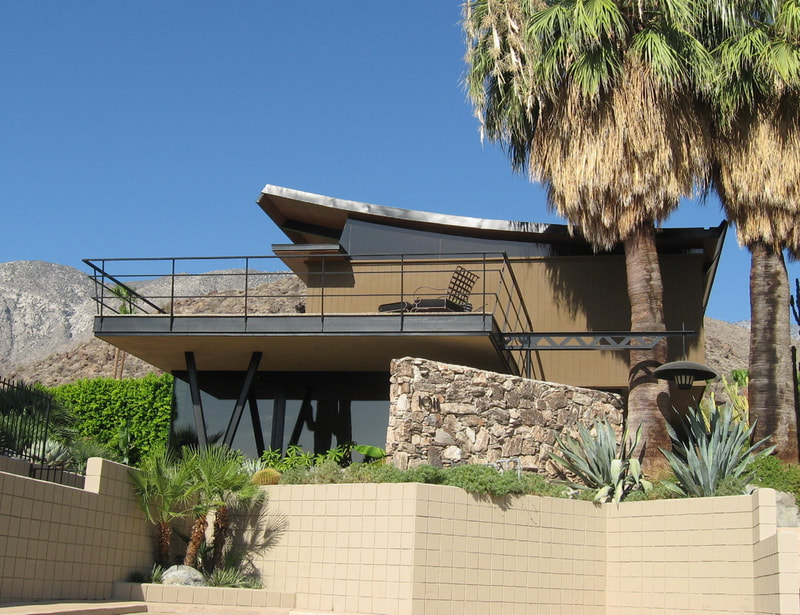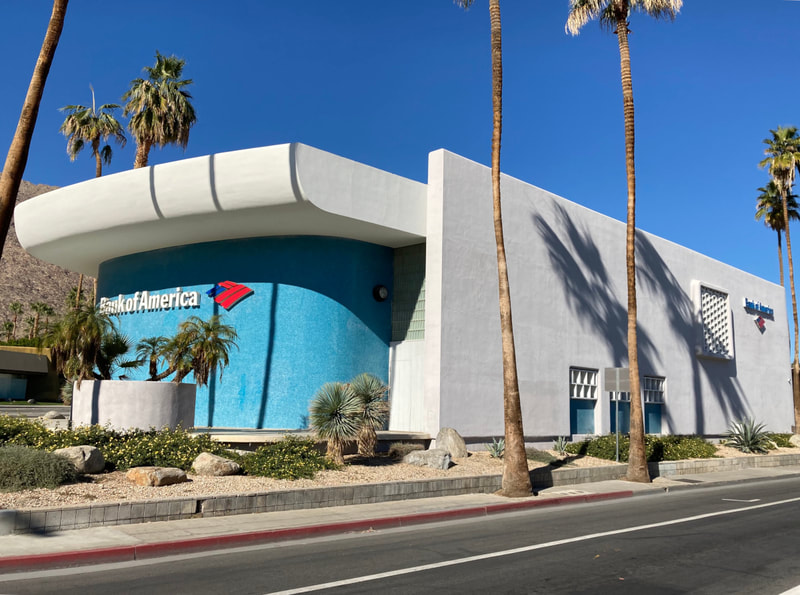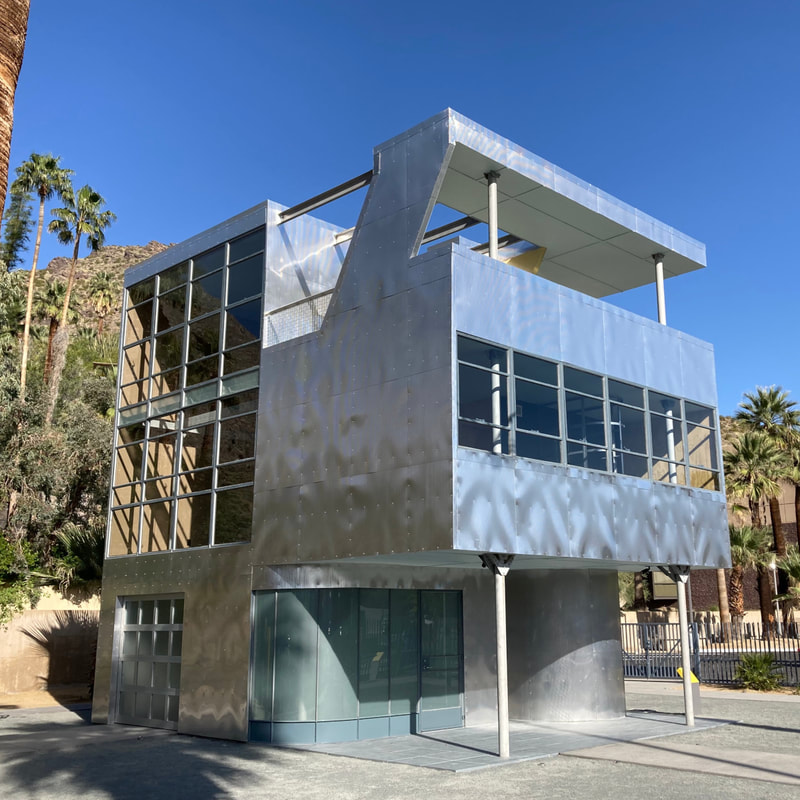Why So Much Modern Architecture In Palm Springs?
Sitting nearly astride the San Andreas Fault, Palm Springs owes everything to the geologic forces that caused hot springs to bubble up from the desert floor. The springs drew native Cahuilla Indians and later intrepid pioneers; then came railroads and new settlers seeking open space and healthy dry desert air.
In the 1920s and 30s Palm Springs emerged as a resort destination drawing Hollywood elites and affluent vacationers from the east. It became a playground for the rich and carefree – a reputation that enhanced its popularity and fueled its explosive growth through the 1940s, 50s and 60s.
Drawn by the growing need for homes and buildings, as well as the extraordinary desert landscape and the city's unrestrained spirit of reinvention, architects came to Palm Springs, too, where they embarked on an extraordinary experiment. The results of this experiment were thousands of bold, innovative structures that expressed the spirit of their unique time and place.
In the 1920s and 30s Palm Springs emerged as a resort destination drawing Hollywood elites and affluent vacationers from the east. It became a playground for the rich and carefree – a reputation that enhanced its popularity and fueled its explosive growth through the 1940s, 50s and 60s.
Drawn by the growing need for homes and buildings, as well as the extraordinary desert landscape and the city's unrestrained spirit of reinvention, architects came to Palm Springs, too, where they embarked on an extraordinary experiment. The results of this experiment were thousands of bold, innovative structures that expressed the spirit of their unique time and place.
Amazing architectural landmarks throughout Palm Springs showcase the timeless designs of the modernist movement
The Modern Movement Embraces The Desert
Desert Modernism took its cues from the ideas of early modernists like Le Corbusier, Walter Gropius, Mies van der Rohe, Marcel Breuer and Frank Lloyd Wright. Its style grew out of a confluence of forces that began with the pure vision of talented architects and incorporated the tastes and expectations of Hollywood celebrities, affluent snowbirds, busy home builders, booming businesses, and an aspiring post-war middle class.
The buildings that resulted were new and original. They reflected and enhanced the stark beauty of their desert environments. They featured honest materials such as glass, wood, steel, stone and concrete that were both beautiful and essential. They assumed an integral role in the aesthetic space between sand, mountain and sky, and they expressed an understated sense of style that replaced ostentation with the inherent drama of quality design.
The buildings that resulted were new and original. They reflected and enhanced the stark beauty of their desert environments. They featured honest materials such as glass, wood, steel, stone and concrete that were both beautiful and essential. They assumed an integral role in the aesthetic space between sand, mountain and sky, and they expressed an understated sense of style that replaced ostentation with the inherent drama of quality design.
Tour the legendary locations that made Palm Springs the epicenter of modernism with PS Architecture Tours.
Celebrated Palm Springs Modernist Architects
|
Modernist Revival Brings A Sleepy Resort Back To LifeBy the late 1970s, Palm Springs' fortunes began to diminish as 'modern' styles fell out of fashion and newer Coachella Valley resorts drew away the crowds. Architectural treasures languished while new homes and developments sprang up in derivative historical styles. And many of the homes and buildings that had come to be associated with Palm Springs' heyday fell into sad disrepair.
Fortunately, neglect turned out to be a blessing when a new wave of avid modernism fans returned to Palm Springs in the 1980s and 90s in search of classic architectural homes. Their enthusiasm fueled a resurgence in mid-century modern style, a timely rescue of countless threatened structures and a dramatic turnaround for Palm Springs' economy. Now famous for its unique concentration of fine modernist homes and buildings, Palm Springs is a hugely popular resort destination where visitors flock from all over the world in search of a stylish, quintessentially modern place to relax, unwind and explore California's cultural treasures and its glorious desert landscape. |
Acclaimed architects who worked in the Palm Springs area
|
|
|
"My daughter loves mid century so she arranged for this tour for our visit. I'm usually not a tour type person, but this was fabulous. I am a history buff and I had so many questions about Palm Springs. Trevor answered them all before I could even ask. But especially regarding the history of these beautiful homes. We had fun on top of learning. A must do in Palm Springs. We could have spent the whole day on this tour!"
Experience Palm Springs Modernist Architecture With PS Architecture Tours
Learn even more with engaging and educational tour guides that share the rich history of iconic landmarks and the architects that brought them to life.
All original content copyright 2024 Palm Springs Architecture Tours

